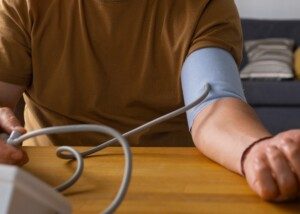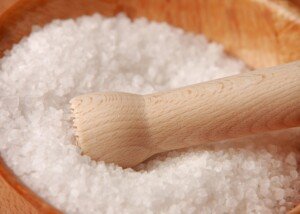What’s the best thing you can do for your kidneys?
How about eating more fruits and vegetables?
Doctors increasingly recommend incorporating fruits and vegetables as a foundational element in the treatment of patients with hypertension, given their substantial benefits for overall health.
Diets rich in these foods are known to lower blood pressure, reduce cardiovascular risk and improve kidney health due to their base-producing effects.
A study published in The American Journal of Medicine provides significant evidence supporting these dietary recommendations.
This study, a five-year interventional randomized control trial, sheds light on the crucial role of fruits and vegetables in managing hypertension and chronic kidney disease.
Hypertension remains a persistent health challenge despite advances in pharmacological treatments.
It’s a major risk factor for chronic kidney disease (CKD) and its related complications.
The increasing prevalence of hypertension-related CKD and the associated cardiovascular mortality is alarming.
Cardiovascular disease is the leading cause of death among individuals with CKD.
One prominent dietary approach for managing hypertension is the Dietary Approaches to Stop Hypertension (DASH) diet.
This diet emphasizes a high intake of fruits and vegetables and has been proven to effectively reduce blood pressure.

Shutterstock/Photographee.eu
Despite the robust evidence supporting the DASH diet, it’s often under-prescribed and, when prescribed, frequently under-implemented by patients.
The study, led by Donald E. Wesson, MD, builds on previous research demonstrating the health benefits of diets high in fruits and vegetables.
Dr. Wesson’s research has shown that such diets reduce acid in the body, thereby lessening the burden on the kidneys and improving overall kidney health.
His studies with animal models and human patients indicated that diets high in fruits and vegetables, which are base-producing, are less harmful to kidneys compared to acid-producing diets high in animal products.
How the Study Was Done
The study involved 153 participants with hypertension and macro-albuminuria — high levels of urine albumin excretion indicative of chronic kidney disease.
The participants were randomly assigned to one of three groups over a five-year period:
1. Fruits and Vegetables Group: Participants added 2-4 cups of base-producing fruits and vegetables to their daily food intake.
2. Sodium Bicarbonate Group: Participants were prescribed sodium bicarbonate, commonly known as baking soda, in two daily doses of 4-5 650 mg tablets.
3. Standard Care Group: Participants received standard medical care from primary care clinicians.
The Results
The results revealed that both the fruits and vegetables and sodium bicarbonate interventions improved kidney health.
However, only the fruits and vegetables group experienced reductions in blood pressure and improved indicators of cardiovascular disease risk.
This suggests that while sodium bicarbonate may benefit kidney health, it does not offer the same cardiovascular benefits as does a diet rich in fruits and vegetables.
The study showed that fruits and vegetables achieved these benefits with lower doses of blood pressure medication.
This indicates that fruits and vegetables should be considered a primary treatment for hypertension, with medications added as necessary.
If Only Patients Would Stick to the Dietary Recommendations…
Despite the challenges in getting patients to adopt dietary changes and stick to them lifelong, the effectiveness and protective benefits of such interventions are clear.
The research team also recommends that patients with high blood pressure ask their healthcare providers to measure their urine albumin-to-creatinine ratio (UACR).
This test can identify underlying kidney disease and assess the risk for cardiovascular disease, providing a comprehensive view of the patient’s health.
One Last Note
In case you’re thinking you’ll get the same kidney and blood pressure benefits by drinking juice instead of eating whole fruit — well, think again!
Fruit foods should be eaten in their whole form. Juices in bottles or cartons won’t cut it.
They lack fiber and other nutrients — nutrients that are killed off during the processing of these juices.
If you find that eating fruits and vegetables in whole form (skip the bottled vegetable juices, too) is difficult, then you can use a device such as the NutriBullet to puree fruits and vegetables (you must add water to make them drinkable).

 Lorra Garrick has been covering medical, fitness and cybersecurity topics for many years, having written thousands of articles for print magazines and websites, including as a ghostwriter. She’s also a former ACE-certified personal trainer.
Lorra Garrick has been covering medical, fitness and cybersecurity topics for many years, having written thousands of articles for print magazines and websites, including as a ghostwriter. She’s also a former ACE-certified personal trainer.
.










































